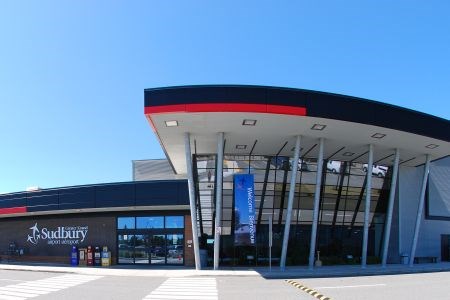The changes the Sudbury Airport Community Development Corporation (SACDC) has made over the past few years to how it operates has helped shield it from the full impact of the travel restrictions put in place for the COVID-19 pandemic, said the corporation's financial auditor.
With passenger volumes down by about 72 per cent, it means total revenues were down by about $4.7 million last year, or 51 per cent from the previous year.
The SACDC finished its fiscal year on Dec. 31, 2020, with a deficit of $3.4 million.
“If you’re losing that much in terms of passenger volume, obviously there’s an implication from a revenue position,” said Oscar Poloni, of KPMG LLP, who presented the SACDC’s financial position at its annual general meeting in June.
In 2020, the COVID-19 pandemic saw a significant decline in passenger volumes. On average, Sudbury Airport sees between 17,000 to 20,000 passengers per month.
However, due to the pandemic, there were 60,000 to 70,000 passengers for all of 2020, said Poloni.
Prior to the pandemic, the revenue-per-passenger rate had been increasing, and the airport was making changes to its revenue sources and its billing arrangement with various suppliers. The corporation wanted to be somewhat less based on passenger volume and more based on fixed costs, said Poloni.
“These changes have protected and insulated you from the full impact of the pandemic,” Poloni told the board during the recent annual meeting.
“Had this happened five years ago under the previous revenue-generating stream, you would have seen a more marked decrease in revenue.” Poloni said while the numbers are not what the corporation had hoped for, “it could have been worse.”
Jean-Mathieu Chénier, the airport's director of marketing, airport excellence and innovation, said the pandemic had a dramatic impact on passenger numbers, but Sudbury certainly isn’t unique in that position.
“Overall, (the pandemic) has had a huge impact on airports and the aviation industry as a whole, across Canada, and the entire world,” Chénier said.
The aviation industry is one of the most heavily regulated industries in Canada, which brings with it a high level of fixed costs, said Chénier.
Whether there is one airplane that lands in an hour or 10 airplanes that land in an hour, it costs the same to plow the runway, to make sure the lines are properly painted, and to make sure qualified staff is on hand.
“We still have to have that presence in order for these commercial airlines to serve the community,” Chénier said.
Insurance, administration, property taxes, policing and security, utilities — these are all largely fixed costs the airport has to pay simply to operate, he said.
There are also a lot of variable costs, such as maintenance and other professional service, and that’s where the airport has managed to save money during a pandemic, he said.
“We have done a number of things to cut costs where we can,” Chénier said.
“We did what we needed to do to ensure operations were maintained, were safe and regulatory compliant. It’s been a tough year. We are in constant discussion with our peers across the country to try and share best practices in saving money. For example, the corporation did not replace staff that retired or moved on, nor did it hire seasonal workers like it would under normal circumstances. The airport closed its secondary parking lot, meaning they didn’t have to maintain the lot over the winter, and terminal hours were reduced.
“At the end of the day, we still have to remain open,” Chénier said.
“Our airport is the northeastern hub for many different services, such as patient transfers to and from Health Sciences North, for forest-fire-fighting efforts by the Ministry of Natural Resources and Forestry.”
What made the past year even more difficult is the fact Sudbury Airport didn’t qualify for some of the emergency funding that was available through the pandemic, such as the wage subsidy program. “We haven’t received any funding at all from any level of government,” Chénier said.
“We are hopeful that funding is forthcoming through different initiatives as we start to see the federal government start to show some support for the aviation industry.”
In other countries, governments have spent “big dollars” on ensuring operations continue in their airports, but the aviation industry in Canada hasn’t seen anything yet, he said. “We are an essential service,” he said.
“We have people flying to and from remote work sites, medical professionals needing to travel, medevac services and patient transfers to and from Health Sciences North.”
Travellers are eager for restrictions to ease further, he said. “There isn’t anyone you speak to who isn’t eager to travel, to go on that trip they haven’t been able to for the past year,” Chenier said.
The airport is starting to see more passengers coming through the terminal, and Air Canada has added a second flight, so they’re back up to two flights a day, Chenier said.
Furthermore, Porter has announced it’s coming back in the fall, and Sunwing has announced they are returning to Sudbury market with at least one destination.
– Sudbury.com




